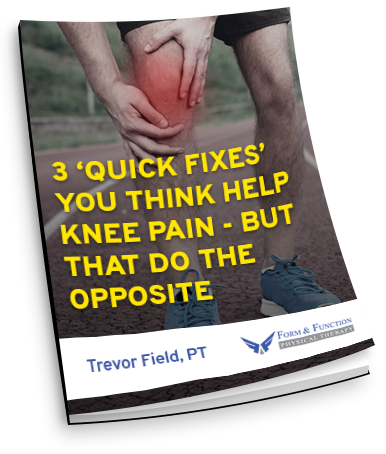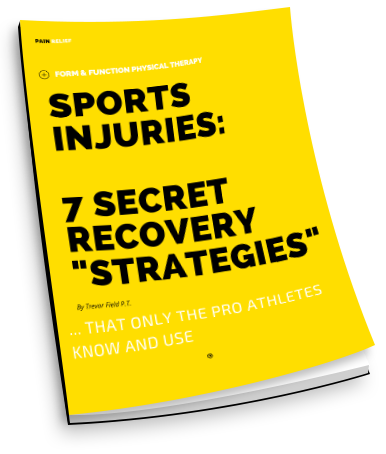Ankle sprains are the most common lower body injuries that I see in my practice. Ankle sprains occur usually by the rolling of the ankle 
Immediate Care
The first thing to do when you suffer an ankle sprain is to stop your activity immediately and assess the severity of the injury. If the ankle sprain is mild to moderate, elevate the ankle and apply a light compression wrap to minimize the swelling. As ice has been shown to decrease pain, it is ok to use ice for a short period of time immediately after the injury. I would recommend applying ice no longer than 10 minutes, remove it for 20 minutes, and then reapply once. You should not ice more than 48 hours after the injury. The effectiveness of ice has been called into question in recent studies. (Keep an eye out for an upcoming blog entry about icing). If the ankle sprain is severe, you should seek medical attention immediately to rule out a fracture. Do not take anti-inflammatory medication (ibuprofen or Aleve) as these medications have been shown to slow down the healing of ligament sprains. Instead, use Tylenol to control the pain.
Early Movement is Key
If the ankle sprain is a grade 1 or 2, early movement is key to proper healing. This should start within 48 hours of the injury. Here are some stretches/movements you can do 3-4 times a day:
1. Alphabet- Trace the capital letters of the alphabet with the injured ankle A-Z.
2. Circles- Make circles clockwise and counterclockwise with the ankle for 15 repetitions.
3. Achilles stretches- Use a towel to pull back on toes and stretch the Achilles tendon. Hold for 5 seconds and repeat 10 repetitions.
4. Standing Calf Raises- Start this once you can put full weight on the ankle. Do this by raising up on your tip toes and then back down. Start with 10 repetitions and work up to 30. Do this with two legs and work up to a single leg. If there is pain doing standing heel raises, begin with heel raises in a sitting position.
Balance and Proprioception
Once you are able to walk normally, it is important to develop the ankle’s ability to balance and control its movement. This is done through a process called proprioception. After an ankle sprain, the small nerve endings in the ankle which convey information to the brain about position are damaged. This affects your ability to maintain your balance and ankle control. Here are several activities you can do to improve this ability:
1. Stand on one leg and try to keep your balance, use support if needed. Start with 15 seconds for 3 repetitions and work up to 1 minute.
2. Stand on one leg with your eyes closed and try to keep your balance, use support as needed. Start 15 seconds for 3 repetitions and work up to 30 seconds.
3. Stand on one leg on a pillow or piece of foam to challenge your balance. Start 30 seconds 3 repetitions and work up to 1 minute.
4. Single leg windmills- Stand on one leg and hold opposite hand in the air. Bend forward and try to touch the opposite hand to the floor and return to an upright position keeping your balance.
Chronic Ankle Instability
After an ankle sprain, if the ankle is not fully returned to normal motion, strength, and balance/proprioception it is prone to re-injury. About 30-40% are re-sprained wit in 6 months. If the ligaments do not fully heal, there is a greater chance that further ankle sprains will occur. This can cause additional damage to the ligaments and cartilage resulting in further pain and possible arthritis.
What Else Can You Do?
Proper care and rehabilitation of an ankle sprain is the best way to make sure your will not have any further problems. Early intervention is best. The sooner you see us, the less likely you are to develop compensatory patterns, recurrent injury, and the faster you will heal. We recommend LASER therapy early in the recovery process. To learn more about LASER therapy click HERE. We also provide functional foot-typing that can determine if the structure of your foot predisposes you to ankle sprains, and provide an orthotic than can improve the mechanics of the foot. And finally, we look to the core, hips, and pelvis to identify any imbalances that may lead to ankle sprains.
Trevor Field is a physical therapist in Rancho Cucamonga, California, specializing in treatment of adolescent athletes, and has developed programs for ACL injury prevention, and sports performance enhancement. To learn more, go to www.formfunctionpt.com





